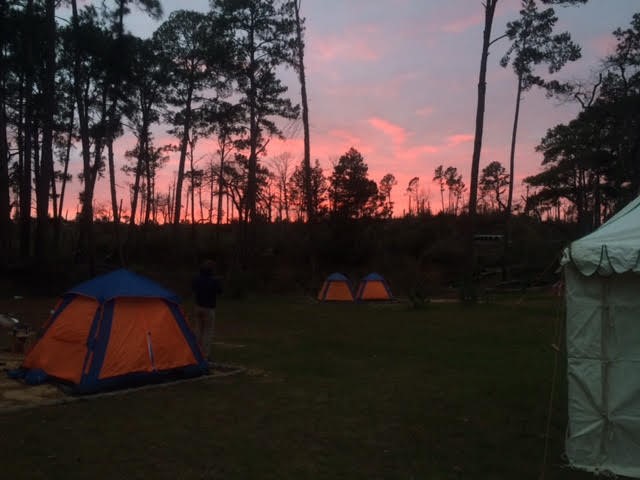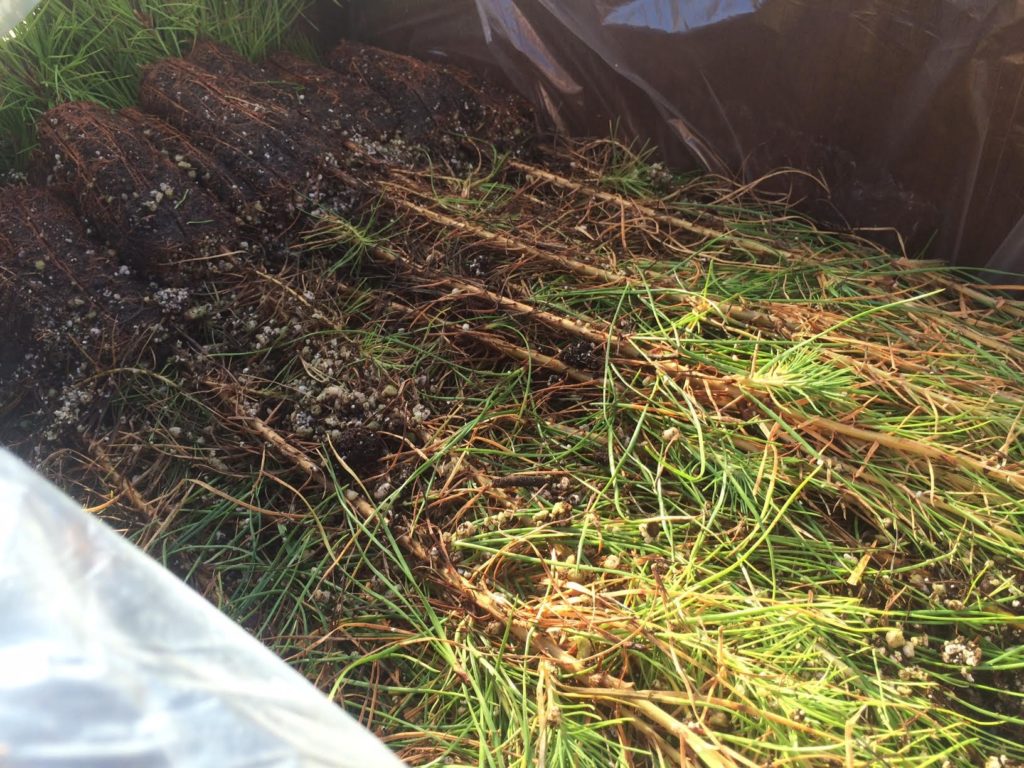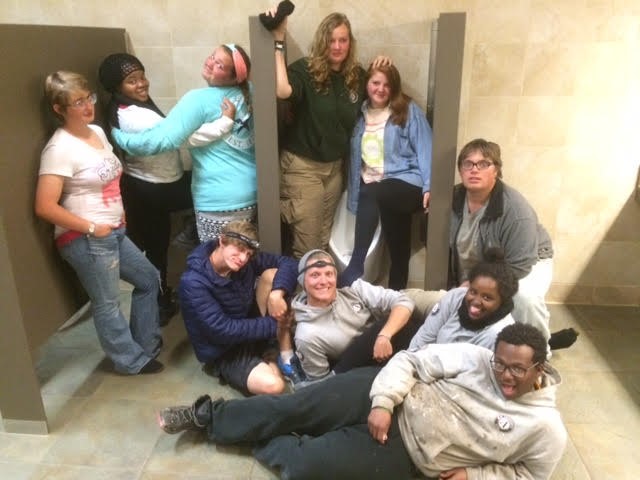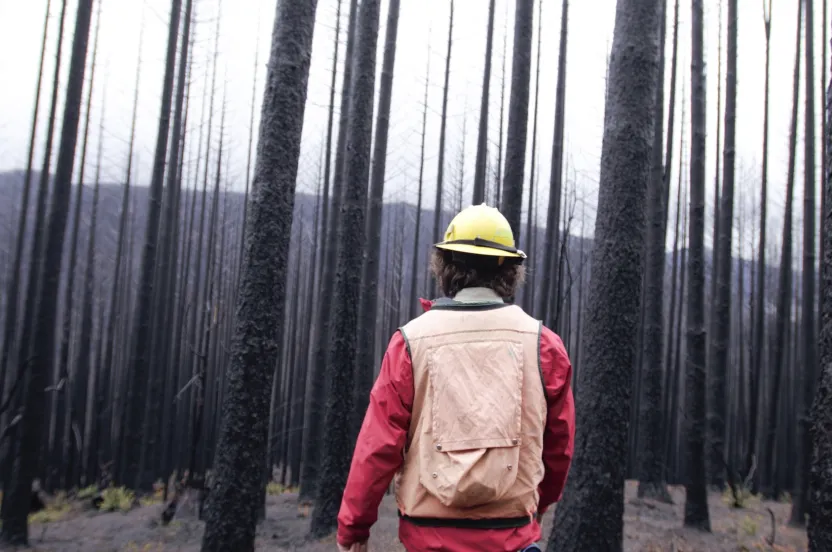Now live: The 2025 Canopy Report. Learn how Americans see trees. GET THE REPORT
A Day in the Life of a Tree Planter
Get a glimpse into the daily experiences and challenges faced by dedicated tree planters working to restore our forests.
December 19, 2016
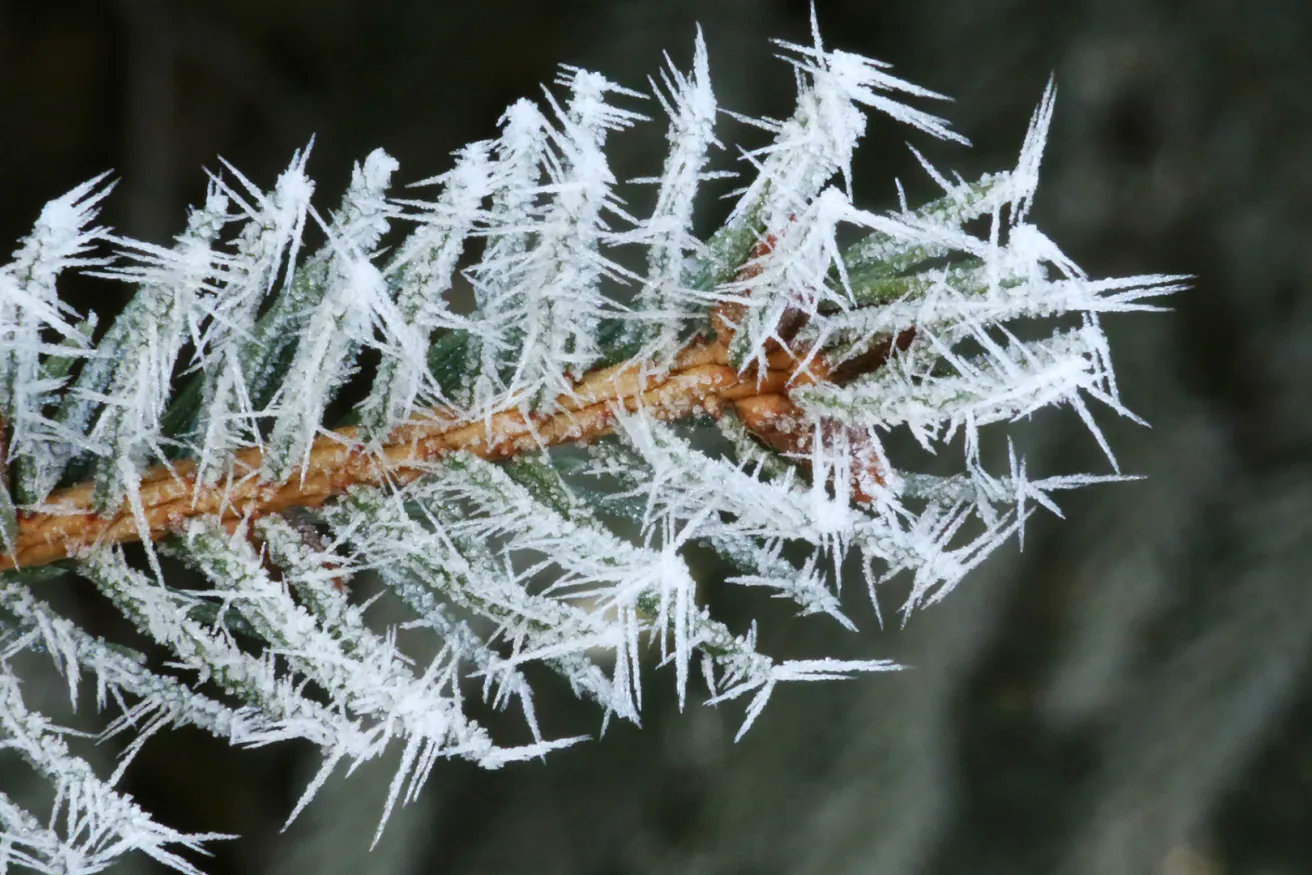
This year, we reached a new milestone by planting our 60 millionth tree on our nation’s forests. These trees are planted with the help of tree planters, who spend long days in varying terrain dedicated to planting new trees. Melissa is one tree planter who was part of the Lost Pines Forest Recovery effort in Bastrop, Texas — where wildfires burned more than 32,400 acres of forest land. Melissa shares insight on what it’s like to plant hundreds of trees a day and the challenges they overcame.
I think most of us had a romanticized vision of planting budded trees along riversides, we weren't expecting boxes containing thousands of saplings. For seven weeks, I led a tree-planting crew committed to replanting trees damaged in the Bastrop County Complex Fire, the most destructive wildfire in Texas history. Although we worked for AmeriCorps National Civilian Community Corps (NCCC), we were sponsored by TreeFolks to help fulfill a joint restoration project between TreeFolks, Texas Parks and Wildlife, Texas A&M Forest Service, The Nobility Project and the Arbor Day Foundation. The learning curve was different for each team member, which in turn made it a new experience for all of us.
We spent up to eight hours a day, five days a week planting loblolly pines on private lands all over Bastrop County. During the seven weeks, my crew and I lived in tents at a group of campsites on Bastrop State Park. Since most of the properties we planted on were large acreage covered with charred trees and shrubs, all of our traveling was done by foot. By the end of the project we had walked nearly 62 acres of private property.
Our first day of work Matt Mears — a reforestation manager at TreeFolks — gave us a training session on how to plant a tree. He showed us the proper depth to plant and the best spacing for the tree to thrive. We also learned that the saplings needed to be kept at a cool temperature so they didn't dry out and die. Matt showed us how to straighten the saplings and turn the soil.
Each property we planted on varied in size, terrain and soil composition, presenting us with new challenges. We planted in everything from small, flat, soft yards to rocky, vegetation-dense, canyon properties spanning multiple acres. There were several properties where we were planting seedlings on steep, rocky slopes. It took a lot longer to dig a hole because of how rocky and dry the soil was. We really came to appreciate soft, moist, sandy soil on a whole new level.
Sometimes, we waded through thick leaves and downed branches. Other times we scaled small cliff sides and pushed through thorny Yaupon Holly trees. The rough terrain pushed us to our physical limits. There were several team members who had never been exposed to this level of rigorous work in the backwoods. Especially in dry, unforgiving heat. It took a lot of adjusting, but we pushed ourselves to physical boundaries we never thought we could.
The hardest thing we all grappled with was the solitary, repetitive nature of the work. There were cases where we were so spread out in different places of a dense property and didn’t interact with each other for hours. Each planter carried a bucket, a rock bar and orange flags to mark the trees. The saplings have to stay cold, so we walked back and forth from our respective planting spots to the TreeFolks vehicle to refill our buckets with saplings. With something as repetitive as, "Dig hole, place seedling, fill hole, tamp ground, place flag" over and over, it's hard to keep up your motivation and speed. We HAD to learn how to keep ourselves and each other motivated at key opportunities. Sometimes, that meant singing "It's A Great Day to Be Alive" in the middle of a wooded five-acre property. That experience — of motivating each other — in addition to living outside for 50 days really brought out a beautiful beast of a team.
In addition to the solitary nature of the job, we pushed through physical challenges too. Carrying a rock bar really built up our arm strength. Walking under the direct sun most afternoons wore us out. Some people became dehydrated, sometimes overheated. Working in vigorous climates forced you to be in tune with your body’s limits. We strengthened our stamina with weekly physical training sessions with the National Civilian Community Corps (NCCC). NCCC required teams to do three physical training activities a week. Sometimes we conditioned. Other times we just did yoga to stretch and relax.
It was hard to physically recuperate nightly because we lived outside. When we came home, we cooked in the dark and slept on the ground. The team wrestled exhaustion by taking hot showers and going to bed at 9:00 PM. And sometimes, when someone messed up the rice for dinner, we went to a Mexican restaurant or hung out at Starbucks just so we could be inside. No words can illustrate how challenging it was to live and work outside for seven consecutive weeks. The experience made us stronger mentally and physically.
Most mornings the temperature was 30-40 degrees with overcast, so we bundled up in beanies, parkas, fleece jackets, neck gaiters and gloves. Even though it was warm to hot by the afternoon, most of us stayed in long sleeves and pants because of the amount of brush, thorns, downed tree branches and grass we were wading through (although one team member refused to wear pants and her legs bled on a daily basis from thorns and branches).
Planting across large properties required a strategic plan of attack. We became familiar with how each other planted — in a straight line, in circles or triangles, or in a complete scatter plot. I used these differences to our advantage and placed people on different points of a property based on their planting style. Some people planted along the property lines and others filled in the middle.
Though we planted individually, we realized that proper coverage of a property (in terms of the number of trees needed and the right spacing of them) meant we had to be in sync with where our teammates had already planted. We became in touch with each other’s spatial reasoning skills, sometimes to the point of conflict. If we hadn't developed a strategy, it would have been chaos — people overplanting in some areas and completely missing other sections altogether. The TreeFolks supervisor walked through the property at the end of each day to ensure we didn’t miss any areas.
Being part of the Lost Pines Forest Recovery initiative was an eye-opening experience. Everyone on my team, myself included, had an opportunity we would have otherwise never have gotten. Environmental matters are some of the hardest problems to make people understand and appreciate. We had the chance to learn about them on a whole other level that we wouldn’t have gotten from visiting a nature center or volunteering for a one or two day initiative. It was very hard at times, but also extremely rewarding. Everyone came out with more knowledge than they had going in.
